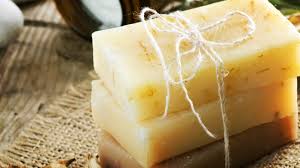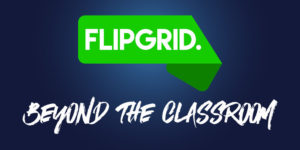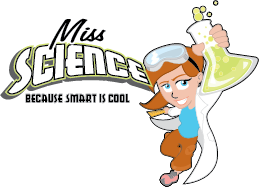Anxiety and fear around COVID-19 (Coronavirus) continue to heighten and our everyday lives are becoming more impacted with each report. While all the noise of what to do (or not to do) is going on, little (and bigger) ears are listening. I can only imagine what is going through the minds of our children and youth as schools, sporting events and even Disney are shutting their doors. In my own lifetime I’ve seen very few events that are in nature as overwhelming as this and this seems to be the beginning.
One of the things that I’ve always found to be a great resource for relieving stress or anxiety is the opportunity to dive into creativity. As more and more schools continue to cancel or go to eLearning models we need to keep our kids engaged. If our hands and minds are busy creating and we are learning through our creation there is less mystery around what seems to be an ominous dark cloud hovering over our world.
Here are 5 ways that you can help kids stay settled while learning more about what COVID-19 is and what you can do.
- Create a Model
This was a very popular activity during my Germology Microsoft Store workshops and summer camps. Anytime kids can create something with their hands and get creative it lessens tension and gives them purpose to identify something that can seem overwhelming and scary.
Use cl ay or dough to create a model. For younger kids it might be using their imagination to describe what they believe “germs” or viruses look like. Older kids can dive in a bit deeper and create a model of a virus, label its parts and define how it works once it invades an organism. Here are some modeling clay recipes from Thought.com . If you don’t want to use modeling clay you can use food or candy. Anything to help get creative and better understand what a virus is.
ay or dough to create a model. For younger kids it might be using their imagination to describe what they believe “germs” or viruses look like. Older kids can dive in a bit deeper and create a model of a virus, label its parts and define how it works once it invades an organism. Here are some modeling clay recipes from Thought.com . If you don’t want to use modeling clay you can use food or candy. Anything to help get creative and better understand what a virus is.
Kids Health and Live Science have some great information and illustrations. In response to the Corona Virus outbreak, Discovery Education has also created a “Viruses and Outbreak Channel” with information and up to date explanations about the Corona Virus. If your school doesn’t subscribe to Discovery Education, they provide a link to sign-up for free.
- Have Fun with Some Mixology
Several years ago we won a grant from Henkel (notes from Pamela Lam, VP of Research and Development is on my website) to develop an afterschool program around household and consumer products. During the 8-week program middle school students learned about the “Science of Soap”, worked on creating their own soap products and partnered with other students to get their ideas to the marketplace. Through Science, Innovation and Entrepreneurship we were able to teach foundational skills in science, while learning to research products, studying consumer habits and embedding essential skills through entrepreneurship. Creativity became abundant as students developed their own cleaning products using essential oils, vinegar, lemon juice and soap bases. It also was a great lesson in failure (not everything works the first time) and how to communicate why our products were important to future consumers and society.

You can take household products (soap, hand sanitizers and cleaners) that are already in your home and talk about the ingredients that are in them while collecting some data. Are they organic (what is organic), are they natural (why/why not), are they effective (do they work well)? Then using their research your kids can create prototypes for what their own product. Don’t limit their ideas, but of course make sure that all materials they use are non-toxic and natural. Many of the supplies are easily obtainable (even today). Tinker Lab has a great recipe for making homemade soap with products that can be easily sourced from Amazon or Michael’s. This is also a great opportunity to talk with kids about how important it is to wash your hands. Have them identify the difference between handwashing and hand sanitizer and Why Soap Works best.
- Express Yourself!
Storytelling is one of the best ways to help us understand things that may seem overwhelming. Thanks to technology and EdTech there are a multitude of platforms that allow us to communicate creatively. Buncee and Flipgird are two popular tools that many schools subscribe to and due to school closings, because of the Corona Virus they are offering free subscriptions. You can also use Google Photos or Slides to create a movie or presentation.


Videos can be as simple as “How to Wash Your Hands” to more complex creations such as animation or detailed storylines. We are creative by nature and allowing the opportunity to express ourselves is a must, especially when the norm is not there. As students are pulled away from daily routines we need to give them opportunities to explore how they can help make a positive impact through their own message. They need to have the opportunity to rise above the noise.

- Read a Good Book
Reading is a great way to escape reality and let your imagination go wild! Storyline Online is a great children’s literacy resource that features actors reading books along with illustrations. There are also activity guides that accompany each book for students in grades K-5. Here’s a link to A Bad Case of Stripes written by one of my favorite children’s authors David Shannon. You can also access books with online catalogs through your school or library. Literature is also a great way to help explain how things work or can affect our lives. There is a plethora of great children’s books on handwashing as well as germs.
- Think Like a Scientist

Who is an Epidemiologist and what does an Epidemiologist do? Now is a great time to talk about careers in healthcare and medicine. There is a lot of discussion going on about the development of vaccines right now, so do a little research about the vaccines that we currently have available. The story of how “mould juice” (penicillin) is a great way to learn about how antibiotics have developed and with penicillin by accident. Studying how viruses work can also be helpful in understanding why we are closing schools and the world seems to be a crazy place right now. Scientists don’t always have the answers, but it’s the journey to find them that can lead to amazing discoveries.
As we are working to find ways to make life as normal as possible, don’t forget to leave out the teachable moments. The more we understand why things around us are happening the more settled we will be. Empower your kids to use their time at home to learn more, create their own way of telling the story about 2020 and the Coronavirus and understand that they are an important part of making the world a safer and healthier place.
